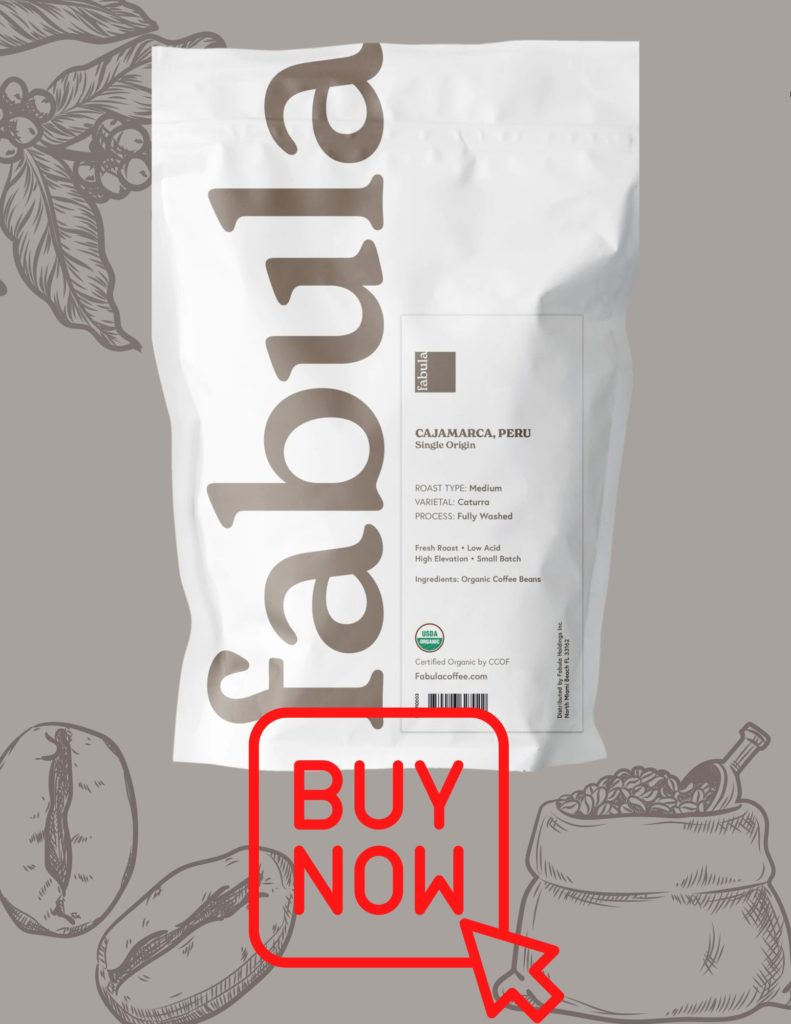If you’re looking for a coffee that’s lower in acidity, you’ve come to the right place. In this article, we’ll answer all your questions about low acid coffee, including which coffee is the lowest in acid, what coffee is not too acidic, and more.
Contents
- 1 Our Picks for the Best Low-Acid Coffee Brands
- 2 Volcanica Coffee
- 3 Fabula Coffee
- 4 Coffee Acidity
- 5 What Coffee is Not Too Acidic?
- 6 Is Low Acid Coffee OK for GERD?
- 7 Is Espresso Coffee Low Acid?
- 8 How do you Reduce the Acidity in Coffee?
- 9 Is Low Acid Coffee healthier?
- 10 Is Arabica Coffee Less Acidic?
- 11 Is Decaf Coffee as Acidic as Regular Coffee?
- 12 Should I Try Low Acid Coffee?
- 13 This is a made-up story with John to explain interestingly: Does oat milk make coffee less acidic?
Our Picks for the Best Low-Acid Coffee Brands
The best low-acid coffees are those that have been dark-roasted. This process reduces the amount of acids present in the beans. Some of the top brands of low-acid coffee include:
Volcanica Coffee
Volcanica Coffee presents a great choice of low acid coffees:
- from light roasts to dark roasts, flavored varieties, and more.
Whether you’re looking for a smooth and mellow flavor, or the health benefits that lower acidity can provide, Volcanica offers a wide range of low acid coffee options.
You’ll find coffees from around the world, including:
- Brazil, Cuba, Costa Rica, Bolivia, El Salvador, Guatemala Antigua, the Indonesian island called Flores – Komodo Dragon Coffee, and more.
All premium-grade coffees are specially formulated to reduce the amount of acids your stomach may not tolerate. Plus, every one of their decaf options goes through a natural process that reduces levels of acidity while preserving flavor.
No matter what type of coffee experience you’re looking for, you’re sure to find something special at Volcanica.
Fabula Coffee
When it comes to low acid coffee, Fabula Coffee has you covered. Most of their coffees are sourced from single-origin farms.
With their selection of light, medium and dark roasts sourced from Mexico, Peru, and Colombia – plus decaf versions too – there’s something for everyone.
Enjoy the amazing taste of their specialty coffee in bags, pods, or sampler packs. Their unique filtering process ensures that each cup is smooth and easy on your stomach.
Shop worry-free knowing that orders over $50.00 can be broken down into four simple, interest-free payments when you select the installment option during checkout! Plus, there are no charges or impacts on your credit score. Enjoy a stress-free shopping experience with convenient payment installments today!
Coffee Acidity
Coffee has a wide range of flavors, aromas, and tastes that make it popular around the world. To understand why coffee tastes the way it does, you need to understand the concept of acidity. The pH scale is used to measure the relative acidity or alkalinity of different substances, including coffee. In this blog post, we’ll explain what acidic coffee is, how it is measured on the pH scale, and how different acids in coffee affect its taste and aroma.
What is the pH Scale?
The pH scale is used to measure how acidic or alkaline (also known as basic) a substance is on a scale of 0-14. A substance with a pH reading of 7 is considered neutral—neither acidic nor alkaline. Substances with a reading lower than 7 are considered acidic, while those higher than 7 are considered alkaline. As a reference point, distilled water has a neutral pH of 7 while lemon juice has an acidic pH of 2-3.
How Coffee is Measured on the pH Scale?
Coffee typically falls between 4 and 5 on the pH scale when brewed correctly. This means that most coffees have an acidic taste profile with subtle notes of bitterness and tartness. However, when brewed incorrectly (such as with too much water or too little grinds) coffee can become overly acidic and bitter in flavor which often leads to unpleasant cups of coffee.
For Example – Acidity Levels in Different Drinks:
Coffee isn’t the only beverage that measures up as being more acidic than others; orange juice and tomato juice both measure at 3-4 on the pH scale as well. Other beverages like milk (6-7), wine (3-4), tea (5-8), carbonated sodas (2-3), and beer (4-5) also vary in levels of acidity depending upon their ingredients and brewing methods used for production purposes.
There are different acids present in coffee that contribute to its unique flavor profile such as
• chlorogenic acid which adds bitterness,
• quinic acid which adds tartness,
• citric acid which adds sourness,
• phosphoric acid which adds sweetness and complexity, etc…
What Coffee is Not Too Acidic?
In general dark roast, coffees tend to be less acidic than lighter roasts because they have been roasted longer.
Is Low Acid Coffee OK for GERD?
Yes! Low acid coffee is generally considered to be safe for those with GERD (gastroesophageal reflux disease). The lower levels of acids present in these types of coffees can help reduce symptoms associated with GERD such as heartburn and indigestion.
Is Espresso Coffee Low Acid?
Espresso typically has a higher level of acids than other types of coffee due to its high-pressure brewing method. However, some espresso blends are specifically designed to be lower in acidity.
How do you Reduce the Acidity in Coffee?
There are several ways to reduce the amount of acids present in your cup of joe!
- One way is by using a dark roast bean that has been roasted longer thus reducing its levels of acids.
- You can also try adding milk or cream to your cup which will help neutralize some of the acids present in your brew or opt for a cold brew which tends to be naturally lower in acidity than hot brewed varieties.
- Finally, you can try using “low acid” coffee which has been specially designed to have lower levels of acids.
Is Low Acid Coffee healthier?
Low-acid coffees may be better for those who suffer from digestive issues such as heartburn or indigestion as they contain fewer acids than regular brewed varieties.
Additionally,
some studies suggest that drinking dark roast coffees may provide antioxidant benefits due to their higher levels of polyphenols compared to light roasts so it may also be beneficial from a health standpoint as well!
Is Arabica Coffee Less Acidic?
Yes! Arabica beans are less acidic than other types of beans, making them perfect for people who want a less acidic cup of coffee! Also, Abeans tend to have more complex flavor profiles making them great for specialty drinks like lattes or cappuccinos where subtle nuances can really shine through without being overpowered by strong bitter notes from higher levels of acids found in Robusta beans.
Is Decaf Coffee as Acidic as Regular Coffee?
Decaffeinated coffee is typically less acidic than regular coffee, as the decaffeination process can reduce levels of acidity in the beans. However, it is still important to check the acidity level of any decaf coffee you purchase before drinking it, to ensure that there are no unpleasant surprises.
Many studies have found that while different coffees and processes can vary the pH levels of caffeinated or decaffeinated beans between 4.7 – 5 on a scale, this discrepancy is usually quite small!
Additionally, if you’re looking for a truly low acid option, look for coffees labeled “low acid” or “natural processed”. These types of coffees are typically low in acids and free from harsh chemicals used during conventional decaffeination processes.
Should I Try Low Acid Coffee?
Yes, If you find regular coffee too acidic, then low-acid varieties are a must-try! Low acid coffees offer the same flavor and aroma but with drastically reduced levels of acidity, making them ideal for those who have difficulty digesting standard brewing methods.
Besides that, many people find that these types of coffees have a smoother and less acidic flavor profile, offering more flavorful notes.
This is a made-up story with John to explain interestingly: Does oat milk make coffee less acidic?
John was a big fan of coffee. He loved the way it energized him and gave him a stimulating kick when it was needed. But he had one major problem with his beloved beverage, the acidity. His stomach just couldn’t take it and he would suffer from indigestion after every cup of joe.
He experimented with different types of milk, hoping to find one that would make the coffee taste less acidic and more palatable to his stomach. He tried dairy milk such as whole milk, 2% milk, and even skim milk but these didn’t seem to do much to reduce the acidity.
That’s when John discovered oat milk. Unlike traditional dairy milk which can reduce acidity by binding with lactic acid, oat milk does something else entirely: it adds dipotassium phosphate which helps neutralize some of the acids in coffee.
John was amazed by how well it worked! Not only did it reduce the bitterness and sharpness caused by high acidity levels but he also found that his stomach was no longer bothered by drinking beer 🙂 after having coffee in the morning. And on top of all this, oat milk seemed better for him to health-wise as it had fewer calories than regular dairy milk.
The only downside is that oat milk doesn’t provide as much richness or creaminess as traditional dairy milk does, but John found that adding a little bit of honey solved this problem perfectly! It gave his coffee just the right amount of sweetness without overpowering its flavor too much.
So now John drinks coffee every morning with a dash of oat milk and honey – knowing that not only will his coffee taste great but also be easier on his stomach!



Leave a Reply